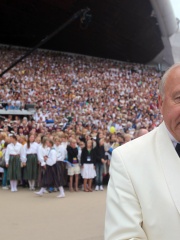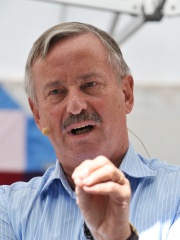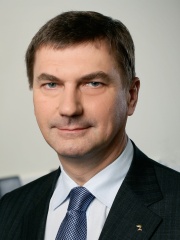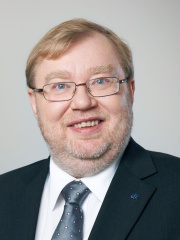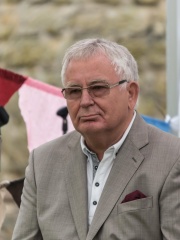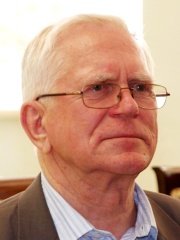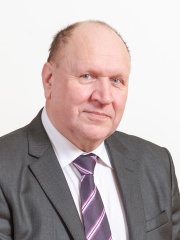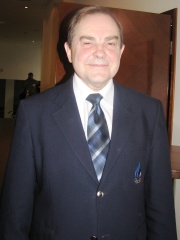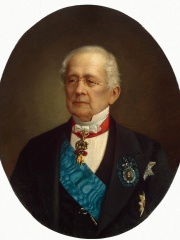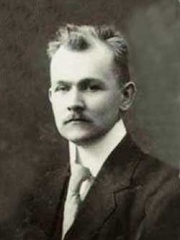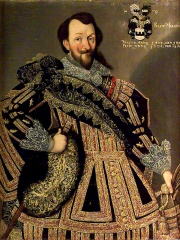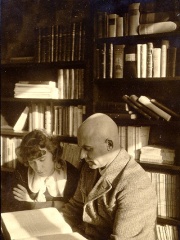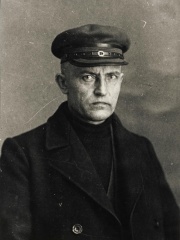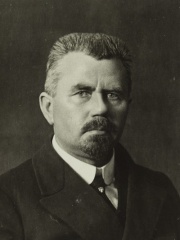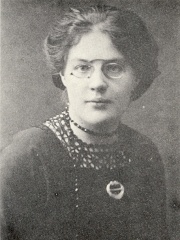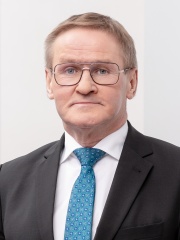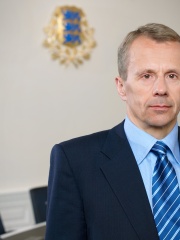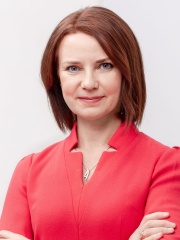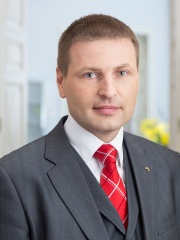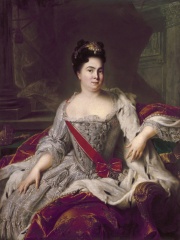
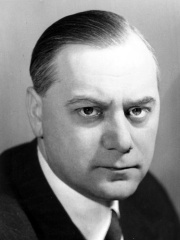
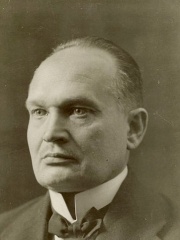
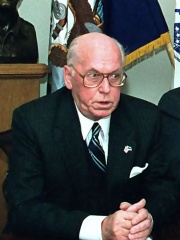
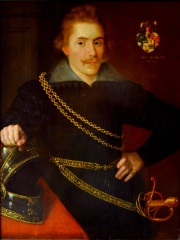
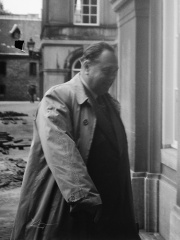
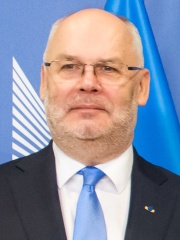
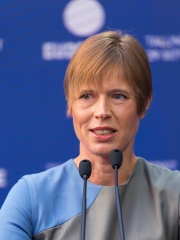
The Most Famous
POLITICIANS from Estonia
This page contains a list of the greatest Estonian Politicians. The pantheon dataset contains 15,577 Politicians, 69 of which were born in Estonia. This makes Estonia the birth place of the 43rd most number of Politicians behind Canada and North Korea.
Top 10
The following people are considered by Pantheon to be the top 10 most legendary Estonian Politicians of all time. This list of famous Estonian Politicians is sorted by HPI (Historical Popularity Index), a metric that aggregates information on a biography’s online popularity. Visit the rankings page to view the entire list of Estonian Politicians.

1. Catherine I of Russia (1684 - 1727)
With an HPI of 78.49, Catherine I of Russia is the most famous Estonian Politician. Her biography has been translated into 70 different languages on wikipedia.
Catherine I Alekseevna Mikhailova (Russian: Екатери́на I Алексе́евна Миха́йлова, tr. Ekaterína I Alekséyevna Mikháylova; born Polish: Marta Helena Skowrońska, Russian: Ма́рта Самуи́ловна Скавро́нская, tr. Márta Samuílovna Skavrónskaya; 15 April [O.S. 5 April] 1684 – 17 May [O.S. 6 May] 1727) was the second wife and Empress consort of Peter the Great, whom she succeeded as Empress of Russia, ruling from 1725 until her death in 1727.

2. Alfred Rosenberg (1893 - 1946)
With an HPI of 73.86, Alfred Rosenberg is the 2nd most famous Estonian Politician. His biography has been translated into 59 different languages.
Alfred Ernst Rosenberg (12 January [O.S. 31 December 1892] 1893 – 16 October 1946) was a Baltic German Nazi theorist and ideologue. Rosenberg was first introduced to Adolf Hitler by Dietrich Eckart and he held several important posts in the Nazi government. He was the head of the NSDAP Office of Foreign Affairs during the entire rule of Nazi Germany (1933–1945), and led Amt Rosenberg ("Rosenberg's bureau"), an official Nazi body for cultural policy and surveillance, between 1934 and 1945. During World War II, Rosenberg was the head of the Reich Ministry for the Occupied Eastern Territories (1941–1945). After the war, he was convicted of crimes against peace; planning, initiating and waging wars of aggression; war crimes; and crimes against humanity at the Nuremberg trials in 1946. He was sentenced to death by hanging and executed on 16 October 1946. The author of a seminal work of Nazi ideology, The Myth of the Twentieth Century (1930), Rosenberg is considered one of the main authors of key Nazi ideological creeds, including its racial theory, persecution of the Jews, Lebensraum, abrogation of the Treaty of Versailles, and opposition to what was considered "degenerate" modern art. He is known for his opposition to Christianity, having played an important role in the development of German nationalist Positive Christianity.

3. Konstantin Päts (1874 - 1956)
With an HPI of 64.90, Konstantin Päts is the 3rd most famous Estonian Politician. His biography has been translated into 49 different languages.
Konstantin Päts (23 February [O.S. 11 February] 1874 – 18 January 1956) was an Estonian statesman and the country's president in 1938–1940. Päts was one of the most influential politicians of the independent democratic Republic of Estonia, and during the two decades prior to World War II he also served five times as the country's prime minister. After the 16–17 June 1940 Soviet invasion and occupation of Estonia, President Päts remained formally in office for over a month, until he was forced to resign, imprisoned by the new Stalinist regime, and deported to the USSR, where he died in 1956. Päts was one of the first Estonians to become active in politics, and he then started a famous, nearly four decades long, political rivalry with Jaan Tõnisson — first through journalism with his newspaper Teataja, later through politics. Although Päts was sentenced to death (in absentia) during the Russian Revolution of 1905, he was able to flee abroad, first to Switzerland, then to Finland, where he continued his literary work. He returned to Estonia (then part of the Russian Empire), and had to serve a prison sentence in 1910–1911. After the February Revolution in 1917, Päts headed the provincial government of the newly formed Autonomous Governorate of Estonia, which was forced to go underground after the Bolshevik coup in November 1917. On 19 February 1918, Päts became one of the three members of the Estonian Salvation Committee that issued the Estonian Declaration of Independence on 24 February 1918. He headed the Estonian Provisional Government (1918–1919), although he was also imprisoned by the German occupation regime for several months in 1918. In the provisional government, Päts also served as Minister of Internal Affairs (1918) and Minister of War (1918–1919) that left him in charge of organizing the Estonian military in the War of Independence against the Soviet Russian invasion. During the 1920s and early 1930s, Päts led one of the more prominent right-wing parties of the time – the conservative Farmers' Assemblies, which eventually merged into another party, the Union of Settlers and Smallholders in 1932. Päts was the Speaker of the Parliament (Riigikogu) (1922–1923) and served five times as State Elder, a post equivalent to that of president in Estonia's radically parliamentarian system (1921–1922, 1923–1924, 1931–1932, 1932–1933, and 1933–1934). During his last term as State Elder, he organized a self-coup to neutralise the right-wing populist Vaps Movement. He was supported by the army and the parliament. During the 1934–1938 "Era of Silence", many reforms were made and the economy grew, while he postponed the return of constitutional order. Largely supported by General Johan Laidoner, Commander of the Estonian Defence Forces, Päts ruled as Prime Minister in duties of the State Elder (1934–1937) and President-Regent (1937–1938) until a new constitution was adopted in 1938, after which Päts was elected the first President of Estonia. During his presidency, the Stalinist Soviet Union invaded and occupied Estonia in June 1940. As president, he was forced to sign decrees for over a month, until being arrested and deported to Soviet Russia, where he died in 1956.

4. Lennart Meri (1929 - 2006)
With an HPI of 63.36, Lennart Meri is the 4th most famous Estonian Politician. His biography has been translated into 50 different languages.
Lennart Georg Meri (Estonian pronunciation: [ˈlenˑɑrt ˈgeorg ˈmeri]; 29 March 1929 – 14 March 2006) was an Estonian writer, film director and statesman. He was the country's foreign minister in 1990–1992 and President of Estonia in 1992–2001.
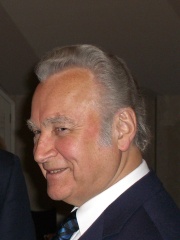
5. Arnold Rüütel (1928 - )
With an HPI of 61.75, Arnold Rüütel is the 5th most famous Estonian Politician. His biography has been translated into 48 different languages.
Arnold Rüütel (born 10 May 1928) is an Estonian politician. He was the third President of Estonia from 8 October 2001 to 9 October 2006. Rüütel was the second president of the country after the end of the 1944–1991 Soviet occupation, and the restoration of the independent Republic of Estonia on 20 August 1991.

6. Jacob De la Gardie (1583 - 1652)
With an HPI of 60.28, Jacob De la Gardie is the 6th most famous Estonian Politician. His biography has been translated into 20 different languages.
Field Marshal and Count Jacob Pontusson De la Gardie (Reval, 20 June 1583 – Stockholm, 22 August 1652) was a statesman and a soldier of the Swedish Empire, and a Marshal from 1620 onward. He was Privy Councilor from 1613 onward, Governor of Swedish Estonia in 1619–1622, Governor-General of Livonia in 1622–1628 (conquered by the Swedish Empire in 1621, and referred to as Swedish Livonia in 1629–1721), and Lord High Constable from 1620. He introduced reforms based on the then novel Dutch military doctrine into the Swedish army. He commanded the Swedish forces in Russia and against the Polish–Lithuanian Commonwealth. He also served as one of the five regents jointly ruling Sweden during the minority of Queen Christina.

7. Felix Kersten (1898 - 1960)
With an HPI of 60.22, Felix Kersten is the 7th most famous Estonian Politician. His biography has been translated into 22 different languages.
Eduard Alexander Felix Kersten (30 September 1898 – 16 April 1960) was the personal physical therapist of Reichsführer-SS Heinrich Himmler. He also became a confidant and adviser to him and used his contacts with Himmler to help people persecuted by Nazi Germany.

8. Alar Karis (1958 - )
With an HPI of 59.39, Alar Karis is the 8th most famous Estonian Politician. His biography has been translated into 33 different languages.
Alar Karis (Estonian pronunciation: [ˈɑlɑr ˈkɑris]; born 26 March 1958) is an Estonian molecular geneticist, developmental biologist, civil servant and politician who, since 11 October 2021, has served as the sixth president of Estonia.

9. Kersti Kaljulaid (1969 - )
With an HPI of 59.25, Kersti Kaljulaid is the 9th most famous Estonian Politician. Her biography has been translated into 78 different languages.
Kersti Kaljulaid (Estonian pronunciation: [ˈkersti ˈkɑljuˈlɑi̯d]; born 30 December 1969) is an Estonian politician who served as the fifth president of Estonia between 2016 and 2021, and was its first and only female head of state since the country declared independence in 1918. She was also the youngest president, aged 46 at the time of her election. Kaljulaid, a state official who at the time served as Estonia's representative in the European Court of Auditors, entered the 2016 Estonian presidential election race in the sixth round after five previous unsuccessful rounds. She was nominated on 30 September 2016 by the majority of parliamentary parties as a joint candidate for president, and the only official candidate for the sixth round. Kaljulaid was voted president on 3 October 2016, with 81 votes and 17 abstentions.
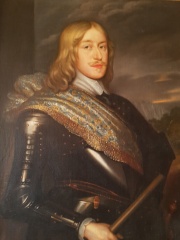
10. Magnus Gabriel De la Gardie (1622 - 1686)
With an HPI of 58.06, Magnus Gabriel De la Gardie is the 10th most famous Estonian Politician. His biography has been translated into 19 different languages.
Count Magnus Gabriel De la Gardie (15 October 1622 – 26 April 1686) was a Swedish statesman and military man. He became a member of the Swedish Privy Council in 1647 and came to be the holder of three of the five offices counted as the Great Officers of the Realm, namely Lord High Treasurer, Lord High Chancellor and Lord High Steward. He also served as Governor-General in the Swedish dominion of Livonia.
Pantheon has 69 people classified as politicians born between 1583 and 1992. Of these 69, 35 (50.72%) of them are still alive today. The most famous living politicians include Arnold Rüütel, Alar Karis, and Kersti Kaljulaid. The most famous deceased politicians include Catherine I of Russia, Alfred Rosenberg, and Konstantin Päts. As of April 2022, 13 new politicians have been added to Pantheon including Alar Karis, Johan Pitka, and Mart Helme.
Living Politicians
Go to all Rankings
Arnold Rüütel
1928 - Present
HPI: 61.75
Alar Karis
1958 - Present
HPI: 59.39
Kersti Kaljulaid
1969 - Present
HPI: 59.25
Neeme Järvi
1937 - Present
HPI: 57.53
Siim Kallas
1948 - Present
HPI: 56.58
Andrus Ansip
1956 - Present
HPI: 54.63
Kaja Kallas
1977 - Present
HPI: 52.92
Mart Laar
1960 - Present
HPI: 49.98
Tiit Vähi
1947 - Present
HPI: 48.62
Andres Tarand
1940 - Present
HPI: 48.52
Mart Helme
1949 - Present
HPI: 47.66
Mart Siimann
1946 - Present
HPI: 47.65

Deceased Politicians
Go to all Rankings
Catherine I of Russia
1684 - 1727
HPI: 78.49
Alfred Rosenberg
1893 - 1946
HPI: 73.86
Konstantin Päts
1874 - 1956
HPI: 64.90
Lennart Meri
1929 - 2006
HPI: 63.36
Jacob De la Gardie
1583 - 1652
HPI: 60.28
Felix Kersten
1898 - 1960
HPI: 60.22
Magnus Gabriel De la Gardie
1622 - 1686
HPI: 58.06
Alexander Gorchakov
1798 - 1883
HPI: 58.05
Bernhard Schmidt
1879 - 1935
HPI: 55.32
Herman Wrangel
1584 - 1643
HPI: 53.17
Johannes Vares
1890 - 1946
HPI: 52.45
Jaan Anvelt
1884 - 1937
HPI: 52.44

Newly Added Politicians (2022)
Go to all Rankings
Alar Karis
1958 - Present
HPI: 59.39
Johan Pitka
1872 - 1944
HPI: 49.61
Mart Helme
1949 - Present
HPI: 47.66
Emma Asson
1889 - 1965
HPI: 46.00
Jaak Aab
1960 - Present
HPI: 38.71
Eva-Maria Liimets
1974 - Present
HPI: 37.50
Jürgen Ligi
1959 - Present
HPI: 36.02
Anu Tali
1972 - Present
HPI: 34.82
Keit Pentus-Rosimannus
1976 - Present
HPI: 33.01
Anneli Ott
1976 - Present
HPI: 32.85
Irina Embrich
1980 - Present
HPI: 31.22
Hanno Pevkur
1977 - Present
HPI: 29.97

Which Politicians were alive at the same time? This visualization shows the lifespans of the 25 most globally memorable Politicians since 1700.

